

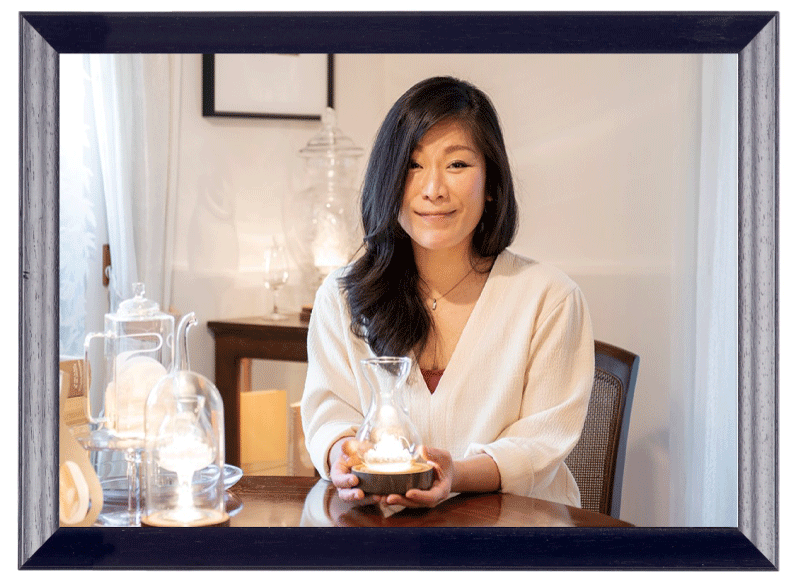
Ayumi Shibata ー Kirie artist
Born in Yokohama, Kanagawa Prefecture, Shibata moved to the U.S. in 2007. In 2012, she enrolled in the National Academy of Design, where she majored in printmaking and multimedia studies. From 2015, she was based in Paris, where she worked and exhibited or two years at the 59 Rivoli artist studios operated by the city of Paris. Combining elaborate paper cuttings and illumination, her fantastical works have been highly acclaimed in many countries. She has made her mark on the international art scene, including a large-scale work exhibited at the Milano Malpensa Airport in Italy and a prize at the International Art Triennial in Germany. In Japan, she held solo exhibitions at Ginza Wako, the Fujikawa Kirie Art Museum and other venues in 2020. In December of that same year, she served as stage art director for a concert tour by singer Ryoko Moriyama. She continues to expand the fields in which she works.
■Web site
I hope to convey through my work
how nature and human beings can coexist harmoniously for ages to come.
Delicate patterns cut from a sheet of paper by the human hand with a utility knife — kirie is a form of paper art that expresses a unique view of the world, combining an artist’s deep sensitivity and expert techniques with the texture of paper and the contrast of light and dark. Among the many excellent kirie artists, Ayumi Shibata is a standout who has attracted a great deal of interest. We visited Shibata’s studio in Tokyo in March, just as the cold winter air had begun to warm, to learn more about what is at the heart of the beautiful art she creates.
One of the defining characteristics of Shibata’s work is its three-dimensionality. Rather than a single flat paper cutout on its own, she layers paper cuttings into elaborately sculpted, complex pieces with a sense of depth. Trees, plants, animals, as well as churches, houses, and other structures that are part of people’s lives are cut from paper and illuminated, breathing life into these forms and casting beautiful shadows full of mystery to express a singular worldview.

One of the defining characteristics of Shibata’s work is its three-dimensionality. Rather than a single flat paper cutout on its own, she layers paper cuttings into elaborately sculpted, complex pieces with a sense of depth. Trees, plants, animals, as well as churches, houses, and other structures that are part of people’s lives are cut from paper and illuminated, breathing life into these forms and casting beautiful shadows full of mystery to express a singular worldview.
“When I look at the inside of a glass container which will hold a piece of my kirie art, a whole three-dimensional world naturally springs to mind. I work straight from the image in my head. I don’t do any sketches; I just work freehand,” Shibata says. Watching the actual process up close, one sees no hesitation as she positions the utility knife against the pure white paper and makes her cuts. “My work reflects everything I am in that moment, so I have to keep my mind free and clear of any negative thoughts. I don’t design intentionally. I focus on breathing life into the paper through my hands.”
Shibata has gained attention on the art scene both in and outside of Japan. Her creative work has been covered by media around the world, but her journey to this level of success involved many twists and turns. After graduating from high school, she was devoted not to art, but to music, through age 25. Although she was passionate about music, she began to question the profit-driven nature of parts of the creative world and, after a car accident, left music behind. It was at that point that she decided to move to New York to study, hoping to discover her unwavering “core” as an artist.
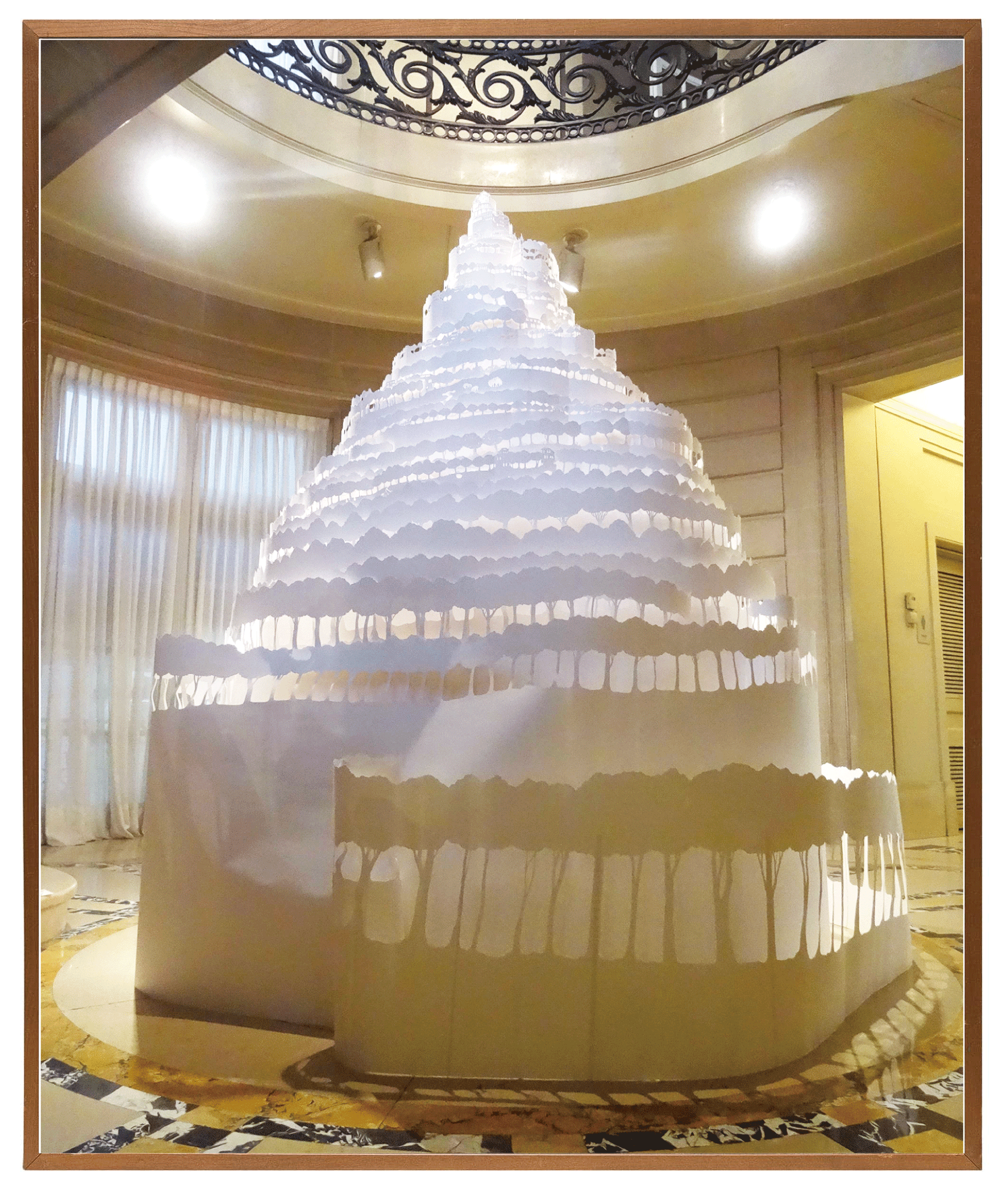
Watashi no Tsubasa (“My Wings”)
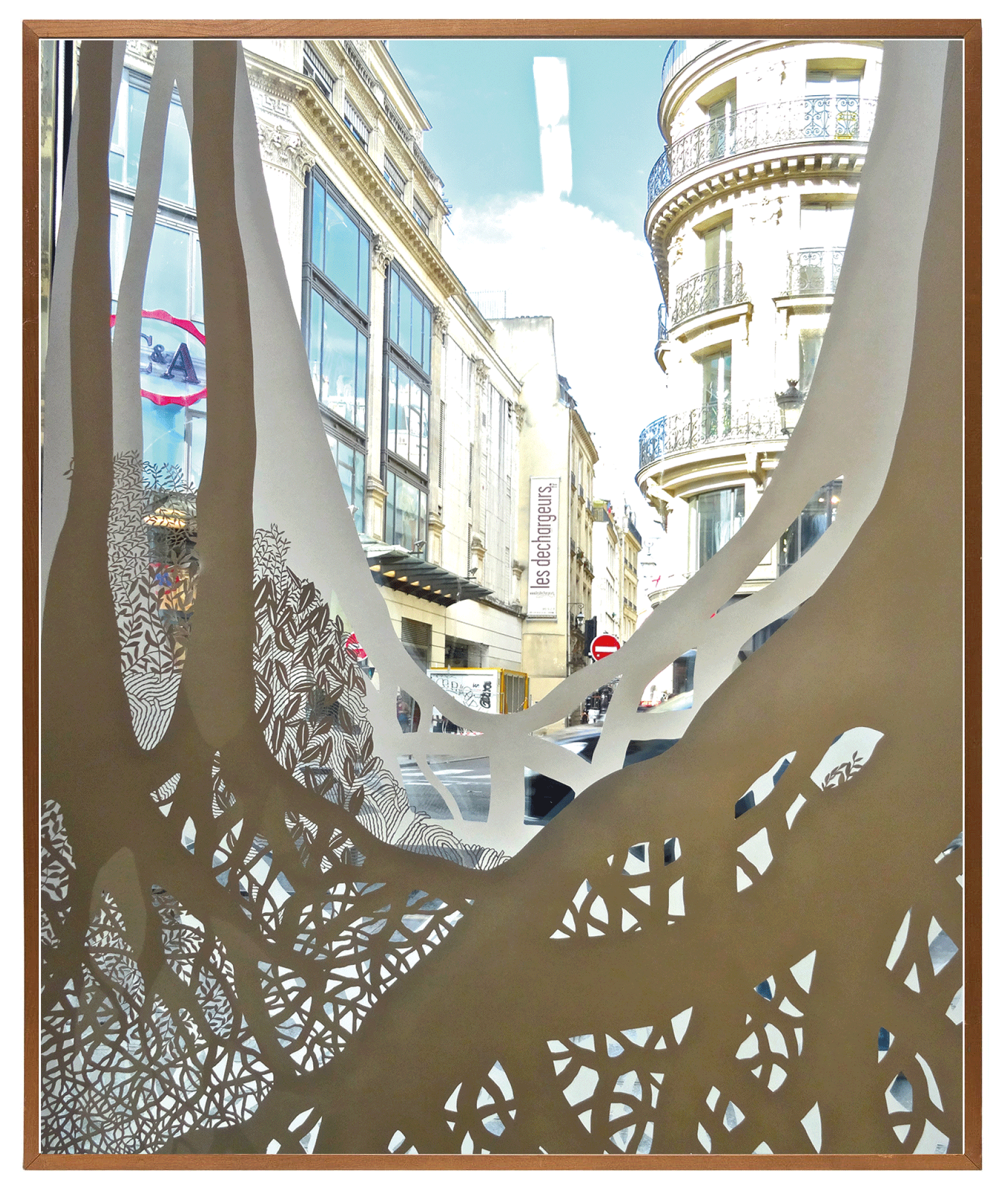
Photo of Shirakaba (“Une theorie des Grandeurs”) at the solo exhibition held in Paris
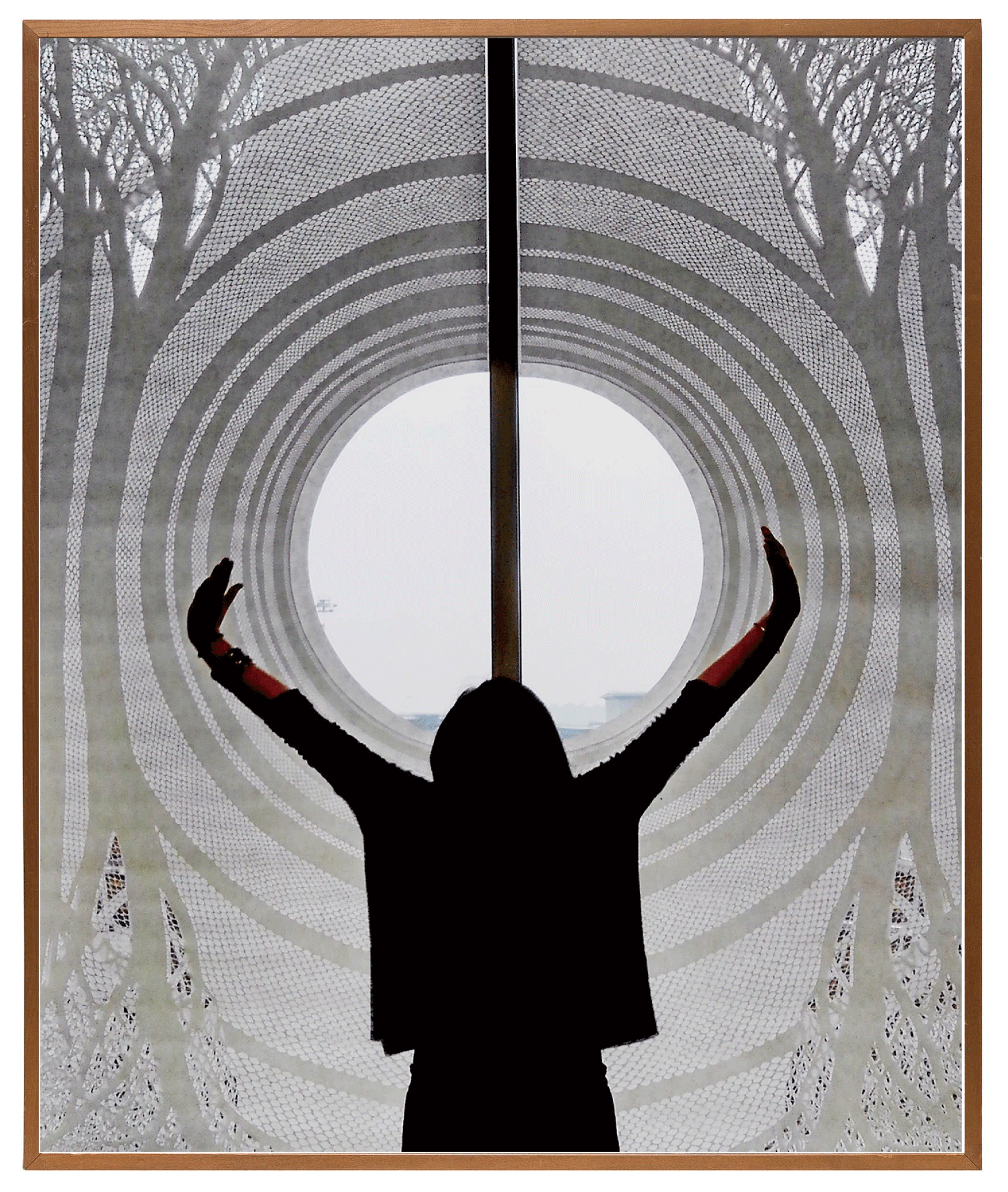
Ama no Iwato Biraki (“ULYSSE”), massive kirie piece exhibited at Milan Malpensa Airport Terminal 1
“When I was there, I always ran up against the language barrier, yet I often went to church. The church was shut off from the bustle of the city. There was silence and peace. It was the perfect place to spend time reflecting. One day, I looked up at one of the church windows, and saw this beautiful light streaming through the stained glass. When I saw the beautiful patterns that the light made on the floor, I had a flash of inspiration. I remembered how fun it was back in elementary school to make stained glass-style decorations out of black construction paper and colorful cellophane, and how it used to fill my heart with joy when I finished one. I immediately went home and made a bunch of them.” The beautiful scene in the church that day became the prototype for Shibata’s pieces, which make such lovely use of transmitted light.
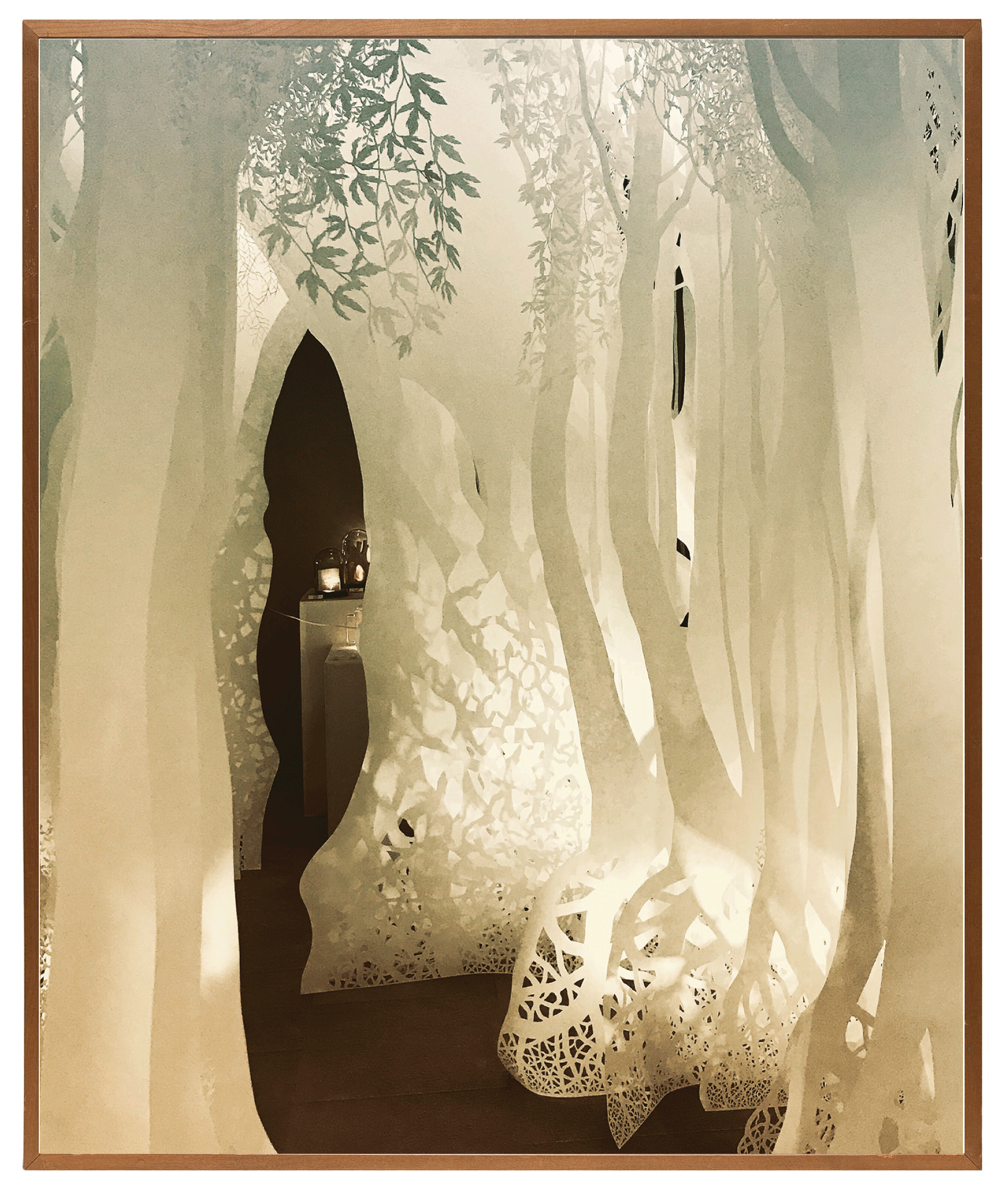
Chowa no Mori (“La banquet de lumier”), from solo exhibition at Wako Ginza
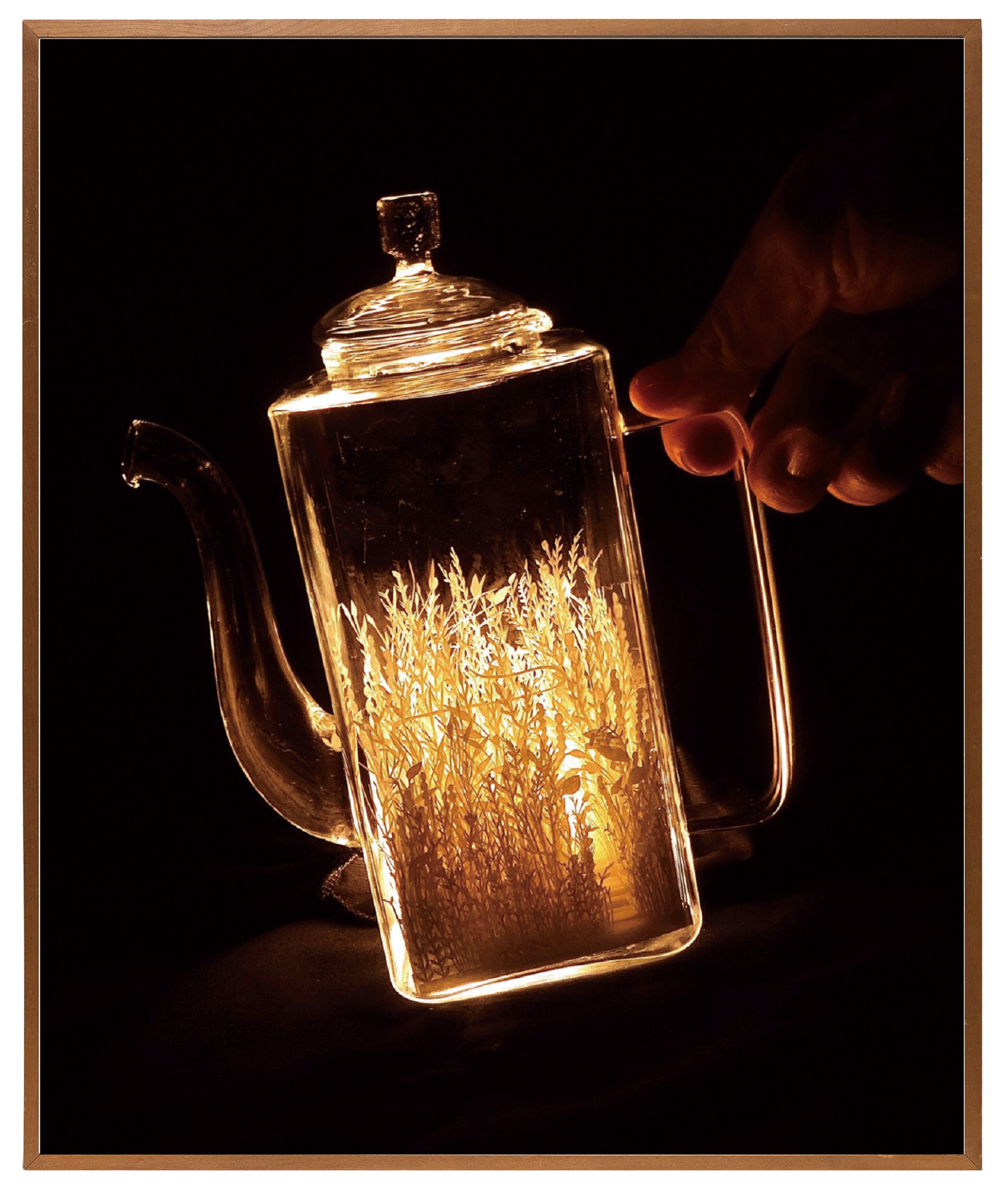
In the Jar Shigemi (thicket),
In the Jar Series
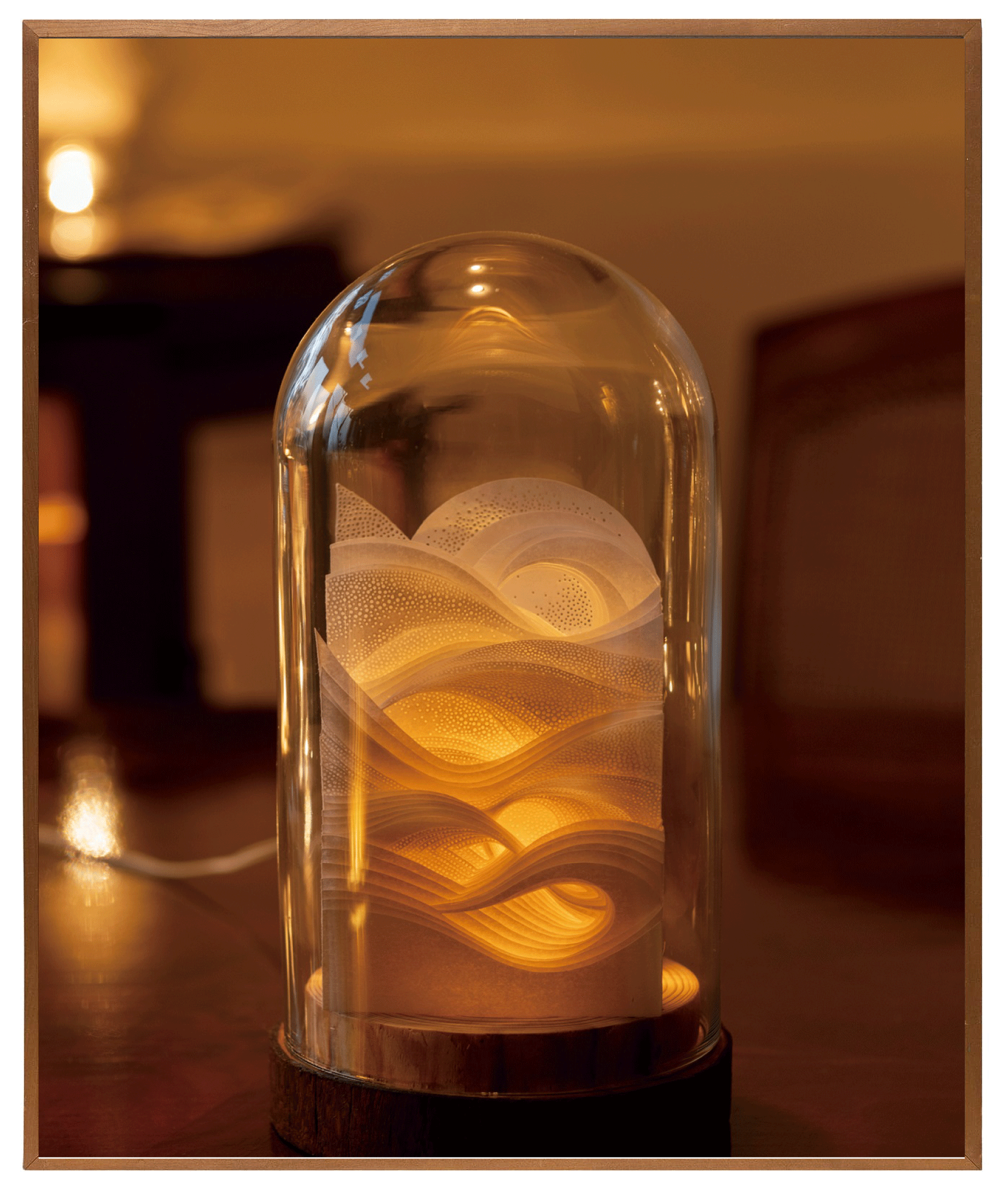
Ginga no Oto (“Sound of Galaxies”)
Thanks to a friend’s introduction, Shibata’s pieces were exhibited at a local gallery. Word of mouth spread among people who responded to her work, and she gained a reputation as an artist and built a portfolio of work. “After a while, I enrolled in a local art school to learn more about contemporary art. With the support of the dean of the university, who told me to ‘pursue what you love,’ I immersed myself in kirie. I received a scholarship and devoted myself to my work.”
After graduating from art school, she followed her instincts and moved to Paris. There, too, fate led to a series of encounters, which helped her establish herself as a kirie artist.
“It was strange how I met so many people I never would have met if the timing had been even slightly different. After I returned to Japan, too, (singer) Ryoko Moriyama offered me a job as stage designer for her concert because she happened to see a three-minute TV program I appeared in. I feel that these many ‘connections’ have brought me to where I am today.”
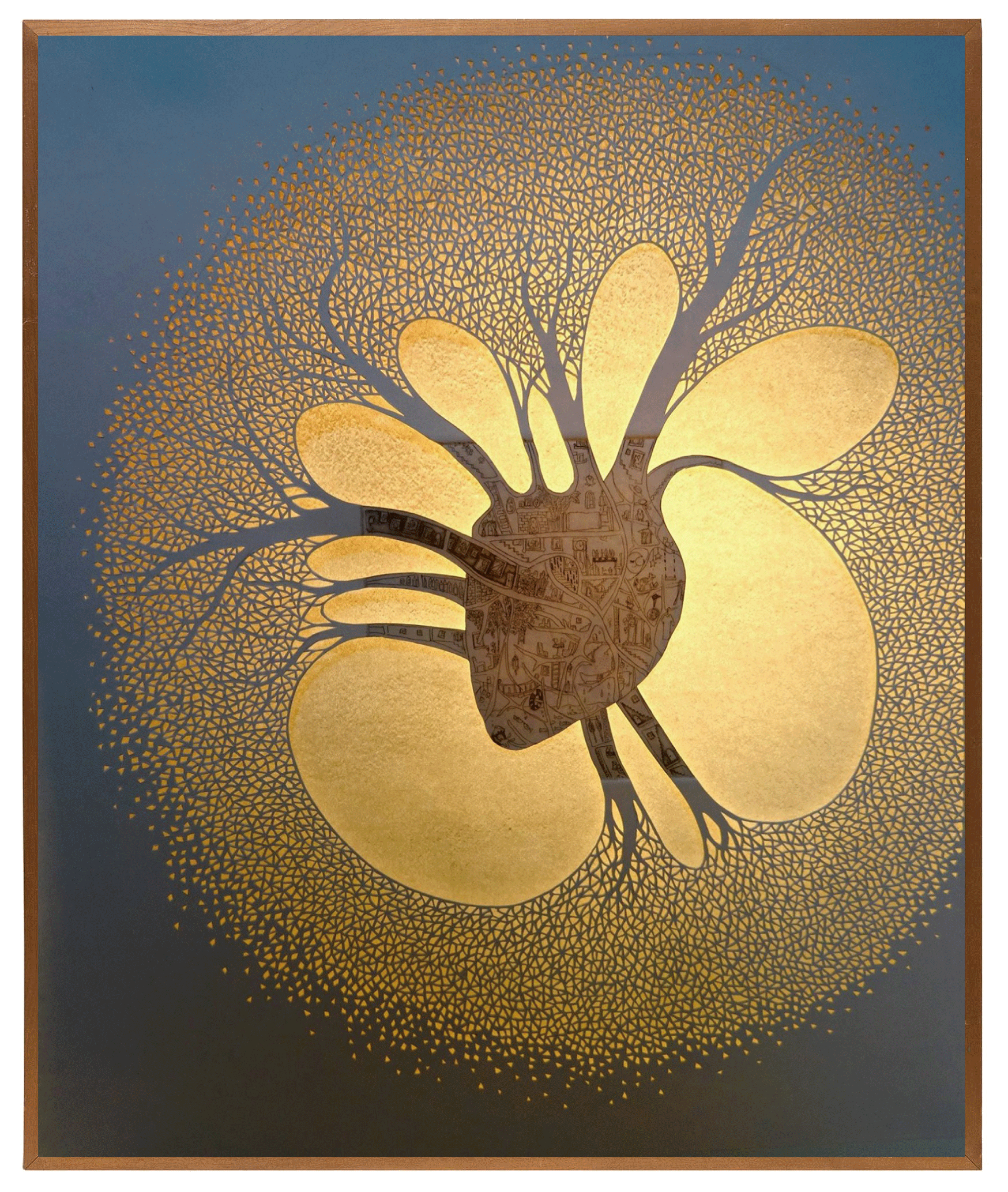
Kodo Roku (“Heart Beat 6”)
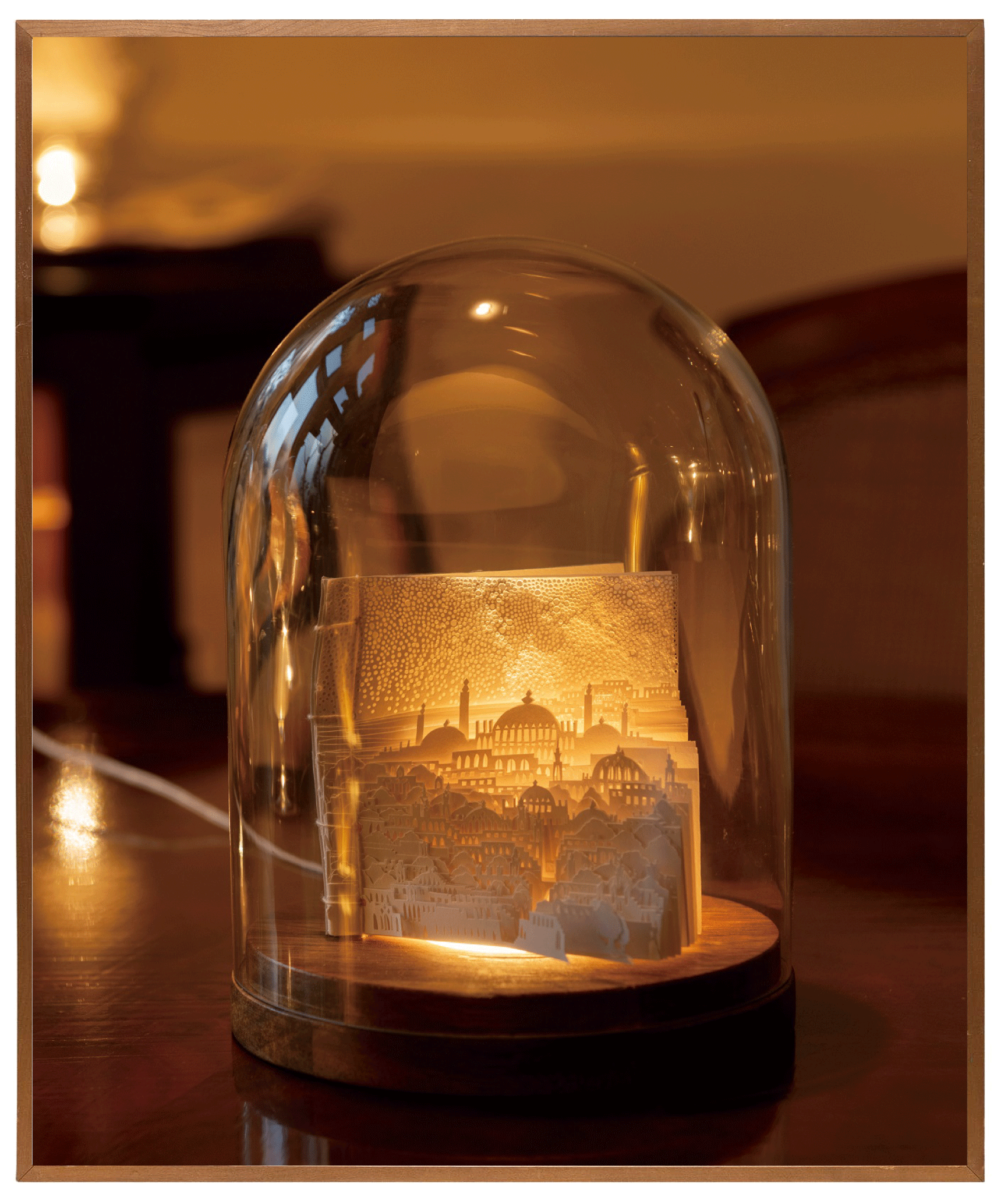
Hoshi no Kioku (“Memory of the Stars”)
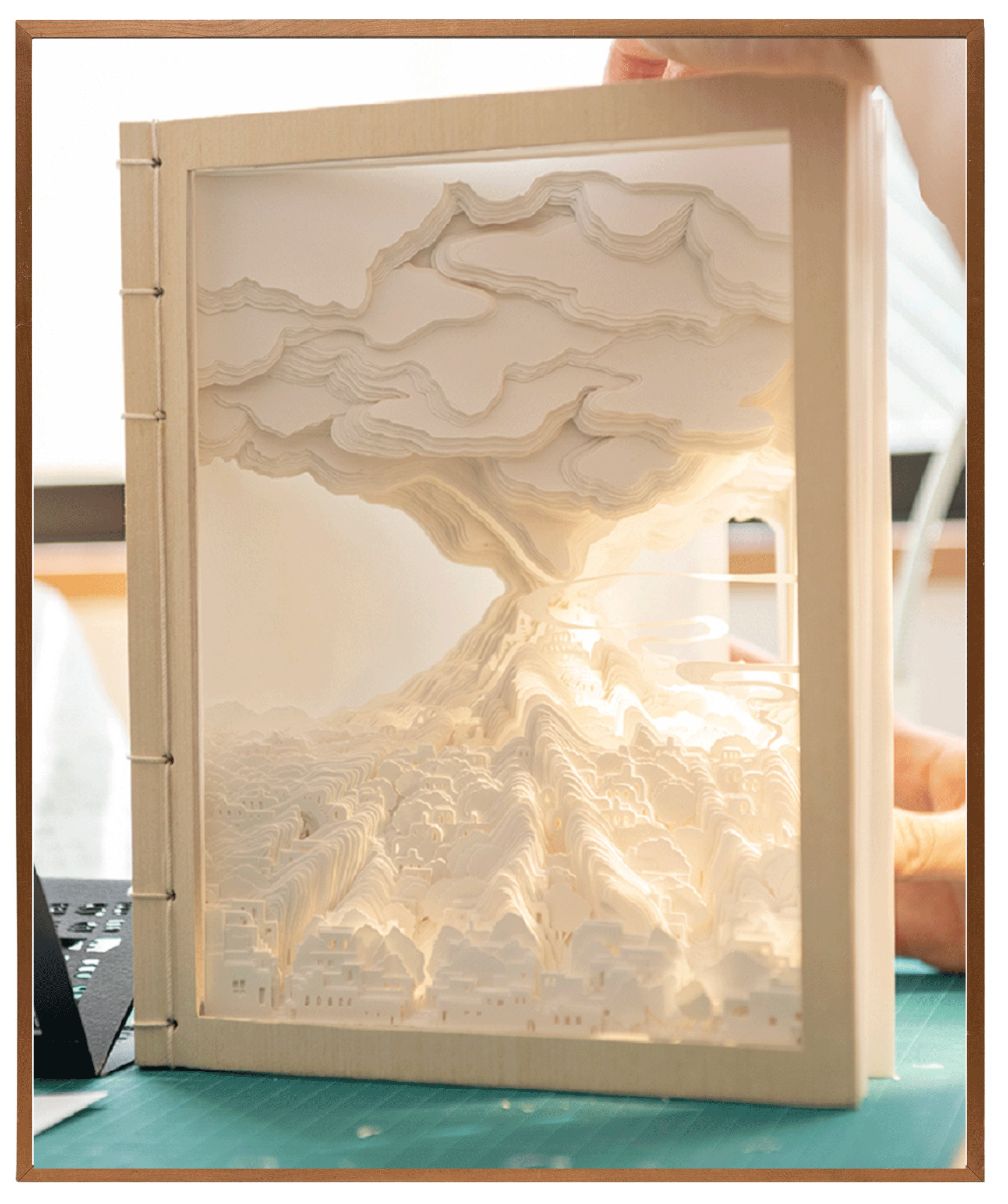
Kami no Yama (“Volcano Book”)
Through her work, Shibata conveys the “connections” in life and the importance of humans and nature harmoniously co-existing.
“Without rain, crops do not grow, and if the rain is polluted, this also affects the human body. We humans have distorted our relationship with nature, because we continue to develop the land selfishly without a thought about the fact that everything is connected under the surface. I think this is at the root of the outbreak of new viruses. We are at a turning point in our society, and I believe humans should use our advanced technologies to lead us to a sustainable way of life. I’d be happy if even a few of the people who see my work realize the importance of living in connection with nature.”
Taking a fresh look at how we ourselves connect with nature and the people around us, and rethinking how we relate to nature, may be steps to a better future. Shibata’s artwork offers the invaluable hints we need to build a sustainable world.
